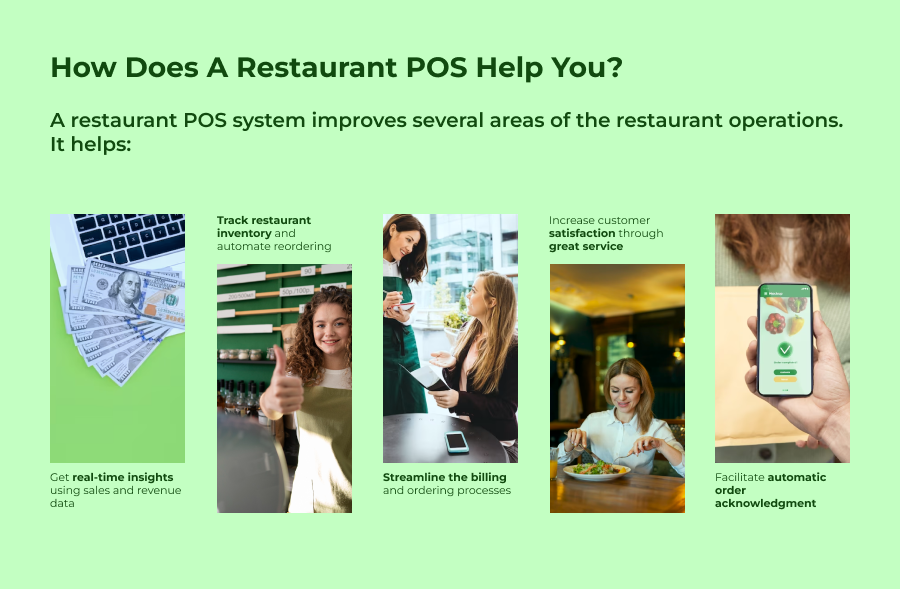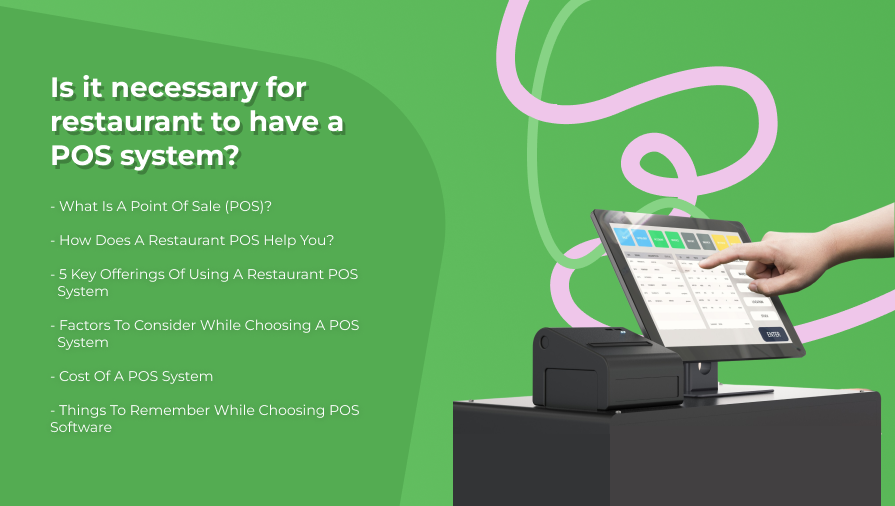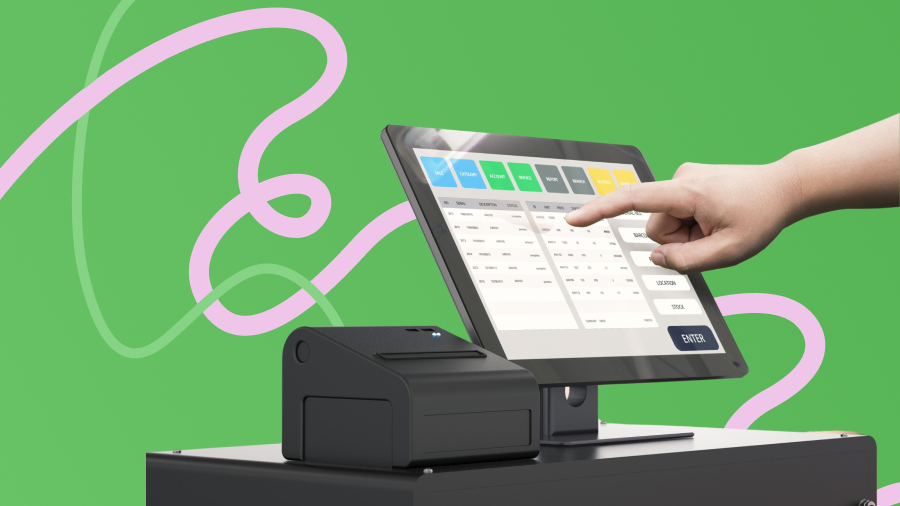Is it necessary for restaurant to have a POS system
Whether you are a seasoned restaurateur or new to the industry, you are sure to have heard the term POS. A Restaurant POS is necessary to streamline restaurant operations. Some POS systems also provide employee management functionality and features like reporting and payroll integrations.
A point-of-sale system is a combination of hardware and software that allows customers to place orders and facilitates restaurants to accept and process customer payments.
Using a POS system, a restaurant can manage sales, inventory and operations. It increases efficiency, reduces cancellations and improves profitability.

How Does A Restaurant POS Help You?
A restaurant POS system improves several areas of the restaurant operations. It helps:
- Get real-time insights using sales and revenue data
- Track restaurant inventory and automate reordering
- Streamline the billing and ordering processes
- Increase customer satisfaction through great service
- Facilitate automatic order acknowledgment
- Customize bills and receipts to align with the brand
- In efficient management of multiple locations using a single dashboard

5 Key Offerings Of Using A Restaurant POS System
Streamlined Operations
Restaurant POS streamlines everyday operations through automation of various tasks including sales and inventory management. This will give you ample time to concentrate on other crucial aspects of the business such as customer service.
Increased Efficiency
POS not only automates tasks. It provides detailed reports on sales, inventory and operations. This data can be used by restaurateurs to make informed decisions about business improvement.
Accuracy
Sales and inventory records must be maintained with accuracy. A restaurant POS system improves data precision and enables businesses to maintain high accounting standards.
Improved Customer Service
POS system keeps track of customers’ previous orders and their preferences. This data can be used to alter the dining experience to suit every individual’s tastes. Thus, a POS system helps provide better customer service and makes customers return to the restaurant.
Increases Profitability
POS boosts profitability by providing detailed reports on sales and operations. These reports can help restaurateurs identify areas where cost-cutting can be done, and revenue increased.
Factors To Consider While Choosing A POS System
A robust restaurant POS system should have the following features:
Billing and KOT
With a good POS, one can punch orders in digital means and generate an automatic Kitchen Order Ticker (KOT). The restaurant servers take the order using the POS software after which the latter prints the order as KOT through configured printers. Using POS reduces table turnaround time and captures essential customer information.
Inventory Management
The POS you choose must be able to track inventory levels to inform you about stockouts in advance and ensure that supplies are available at all times.
Detailed Reporting
The POS software that you consider for your restaurant must generate extensive reports on sales, inventory and operations. This data must be used for business enhancement.
Menu Management
Any good POS system should enable restaurants to edit, modify and delete items on the menu anytime. These changes should also be reflected in all the food ordering apps that the restaurant works with.
Delivery Integrations
If you wish to use third parties for food delivery, the POS software must be able to integrate with food delivery services and allow you to manage delivery status through the POS screen.
Multi-Device Support
The POS software should be accessible from any laptop or mobile and not be dependent on a POS system.
Integrated KDS
Your restaurant’s POS software should be able to notify the kitchen display system about order details, any updates and requirements without any manual intervention.
Cost Of A POS System
The cost of a POS depends on the features that the restaurant requires and also the size of the business. One can choose between a monthly or annual subscription and pay a stipulated fee for support and maintenance. This can cost up to $250. The cost will vary based on your needs and choices.
Things To Remember While Choosing POS Software
There are other considerations that must be taken into account during the process of POS selection.
Reliability
Once you start using a POS, it becomes the digital hub for your business. So, there should ideally be no bugs or downtime for your POS. Ensure that the software you choose has a proven record of high uptime. This will lead to the success of the restaurant operations.
Adaptability
The POS system should be future-proof. It should not be old or traditional and fail to meet the ever-evolving needs of the online ordering business. The POS must be adaptable and built recently with features that fulfill the needs of the modern restaurant business.
Multi-Device Support
An ideal POS should not limit you to a single machine. If it does, you will be losing out on a crucial share of the business. Your POS software must be capable of working efficiently on laptops, tabs and mobiles as well. Several users working for the restaurant must be able to navigate the POS simultaneously.
Easy To Use
Only if the POS is simple and easy to use can the staff be trained quickly to use it. Launching the system also can be done in no time.
Compatibility
The POS system you are about to start using for your restaurant should be compatible with the hardware that is already being used. This includes computers, printers, barcode scanners, etc.
Customer Support
The POS software should encompass excellent customer support to address the questions you have and solve problems when you run into any.
How Does A Restaurant POS System Work?
When guests walk into a conventional full-service restaurant, they seat themselves at a table, choose dishes from the menu, place an order, enjoy the food and make a payment before leaving. If it is a self-serve restaurant, guests order and pay at the counter after which they either sit down at the venue to eat or take their food as a parcel.
In both ways, the restaurant POS system permits restaurant staff to feed in the order digitally, send information to the kitchen, receive payment from the guest and also collect precious data during every transaction.

Conclusion
Restaurant business involves hard work. But with a modern restaurant Point-Of-Sale Technology, operations can be made less cumbersome. Ensure that you keep in mind all the factors discussed above before making a choice. When a POS works the way you want, and is backed by personalized service and support, you have nothing much to worry about. For more assistance on digital marketing services for restaurants, get in touch.
